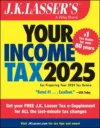No Clawbacks for Gifts if Estate Tax Exemption Changes
Currently, the estate tax exemption is large enough ($11.4 million for decedents dying in 2019; $11.5 million for those dying in 2020) to protect most estates from having to pay any federal estate tax. This exemption amount is the result of applying the unified credit to the tentative estate tax. This same exemption amount can be used for lifetime gifts, reducing the exemption available at death. However, there has been concern that if the amount of the estate tax exemption is rolled back (say to $5 million or so) when the present limit expires after 2025 (or earlier if Congress so decides), that this would trigger tax problems for those who used the large exemption for lifetime transfers.
In final regulations, the IRS provides a special rule to protect those who take advantage of the current large exemption for lifetime transfers (T.D. 9884, effective 11/26/19). Under the special rule, the portion of the credit against estate tax that is attributable to the basic exclusion amount, or BEA (another term used to describe the estate tax exemption) is based on the greater of the two BEAs: the one in effect at the time of the taxable gifts or the one in effect at the time of the decedent’s death after 2025.
Example 1. Individual A who was never married made cumulative taxable gifts of $9 million, all of which were sheltered from gift tax by the cumulative total of $11.4 million in BEA allowable on the dates of the gifts. The BEA on A’s date of death is $6.8 million. Because the total of the amounts allowable as a credit in computing the gift tax payable on A’s post-1976 gifts (based on the $9 million of basic exclusion amount used to determine those credits) exceeds the credit based on the $6.8 million basic exclusion amount allowable on A’s date of death, the credit for purposes of computing A’s estate tax is based on a BEA of $9 million (which is larger than the $6.8 million BEA for the year of death).
Example 2. Same facts except that lifetime gifts were only $4 million. Because the total of the amounts allowable as a credit in computing the gift tax payable on A’s gifts is less than the credit based on the $6.8 million BEA allowable on A’s date of death, the credit applied for purposes of computing A’s estate tax is based on the $6.8 million BEA as of A’s date of death.
Note: Portability of the unused exemption amount (referred to as the deceased spousal unused exemption, or DSUE), which allows the surviving spouse to increase his or her BEA accordingly, continues to apply, even after 2025. There has been no change in the rules for portability.
Rollover
A tax-free reinvestment of a distribution from a qualified retirement plan into an IRA or other qualified plan within 60 days.



